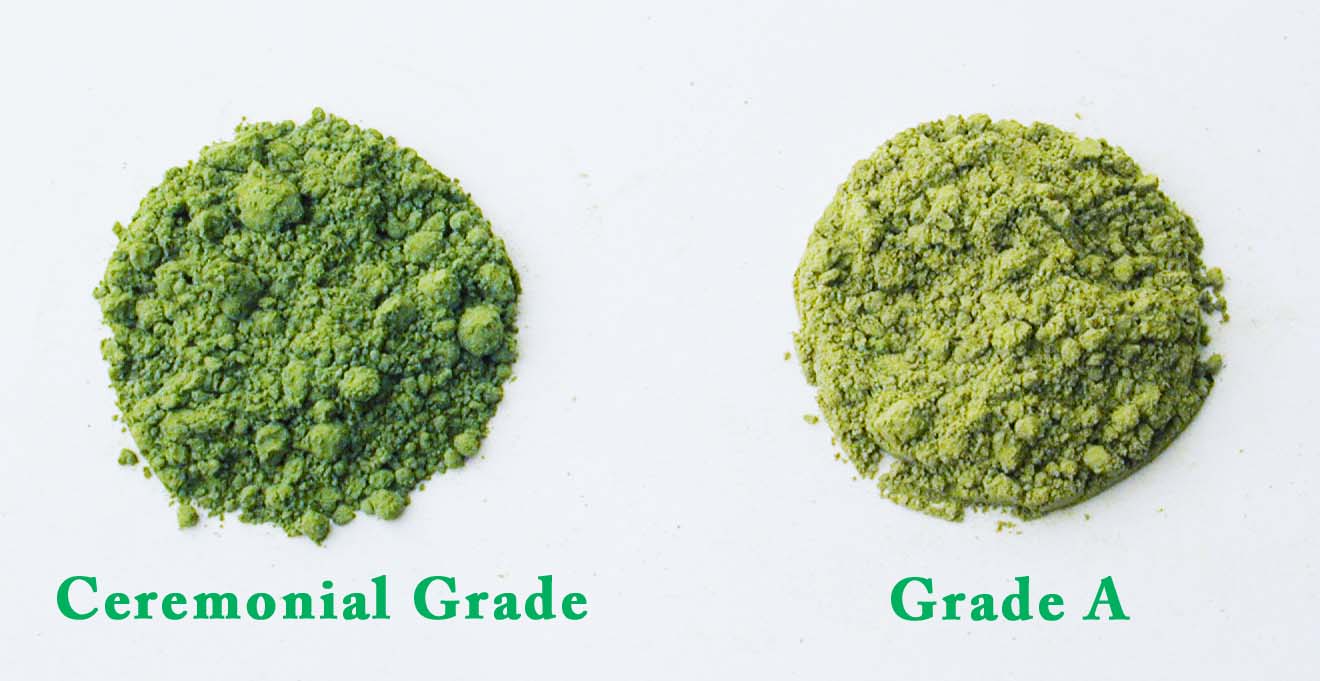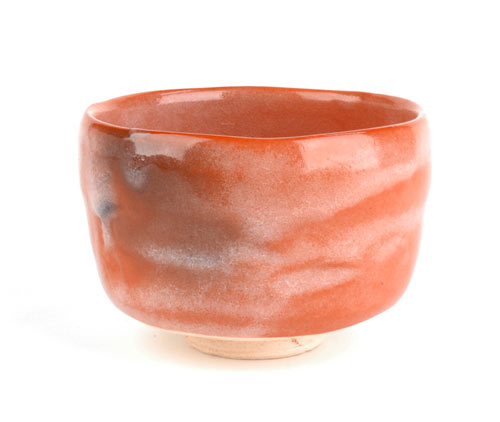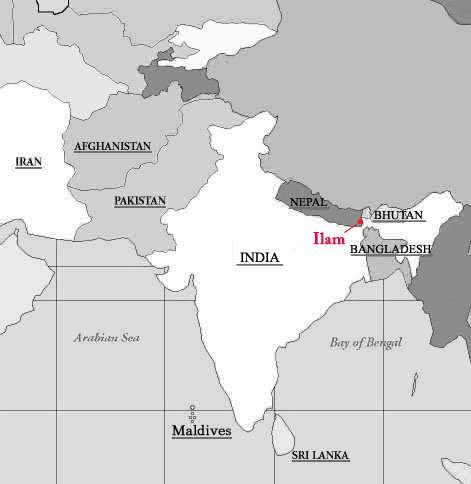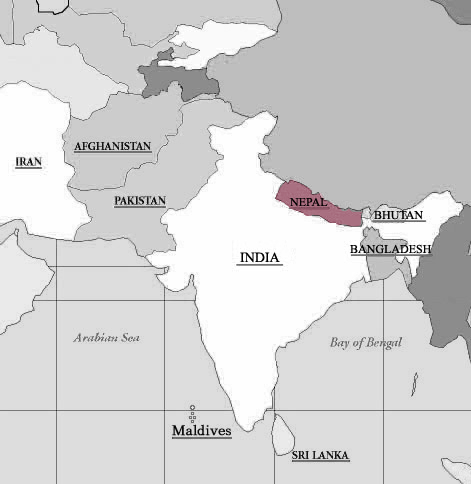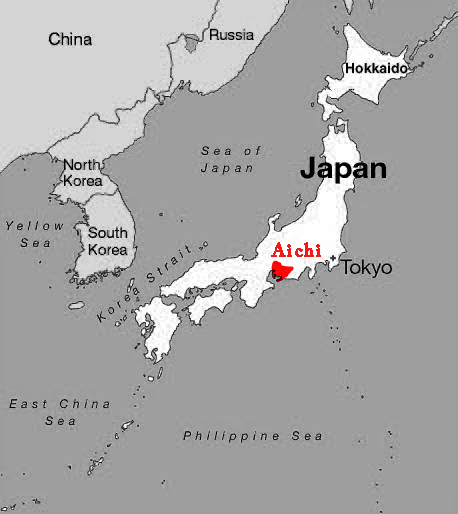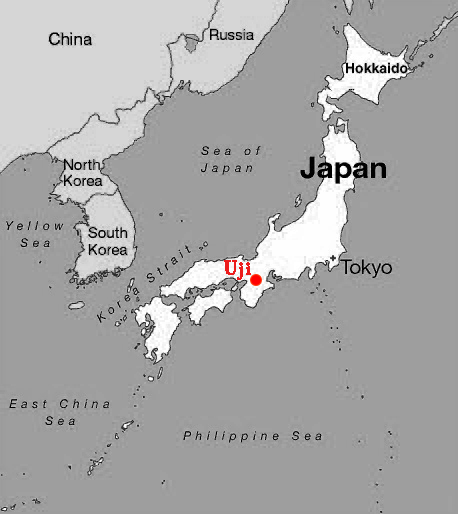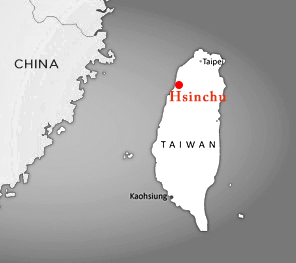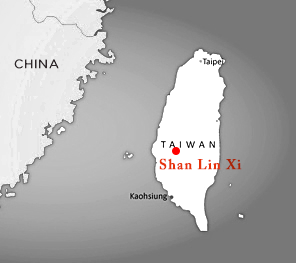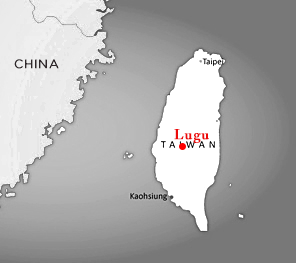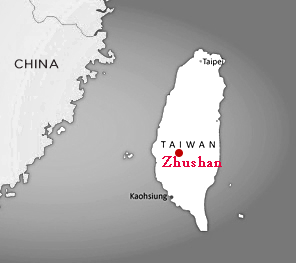Traditionally, most teas in Japan used to be plucked by hand. These days, Japanese tea is mostly harvested with the use of a mechanical harvesting machine. Only high grades of green teas in Japan such as hand-picked Gyokuro, Sencha, or Matcha are hand plucked and therefore more expensive. There is also a difference in flavor of the tea between hand plucked or machine plucked. Hand plucked tea is smoother, mellower with more fragrance.
Senchado – Leaf
In brewing Sencha green tea for a large group, considerable amount of leaf is used. The technique to dispense the leaf from a traditional Senchado tea caddy is unique.
Plucking Tea
View orthodox style (Hand plucking) of tea. From our recent trip to the China-Burma border, home to remote tea gardens with a ‘semi-wild’ character.
Oolong Tea Crafting
Crafting oolong teas is an artform with tremendous skill involved. Native to Anxi, Fujian province in China and parts of Taiwan. The crafting is a multi-step process. It requires rolling the leaves in cloth sacks and sorting them in successive steps.
Music and Tea
Music and Tea, what better pair could there be?. Dr Jiyu Yang, playing the Chinese Pipa at our teahouse inside Lan Su Chinese Garden. We are honored to have him as our resident scholar. Dr Yang teaches music, traditional calligraphy and is a humble poet.
Calligraphy in the Garden
Fresh Harvest: Darjeeling Heritage
Darjeeling Heritage – Okayti, Darjeeling District, India
At the Tao of Tea, we look forward to the spring. Not only is it the time of year where the dread of winter begins to slowly lift, but it marks the beginning of tea season. Every year in early spring, we begin to receive samples from the year’s first harvest. Some of the first teas that we tried this year came from Darjeeling—the famous tea district in Northern India. From our travels, we’ve established a relationship with many gardens in the region. This tea comes from the oldest certified organic garden in the eastern region of Darjeeling. Our Darjeeling Heritage is one of the earliest pickings of the year. Known to the farmers as DJ-7, this harvest is a refreshing, uplifting brew with a complex flavor. The undertones comprise white grapes, fruit and slight dryness. It is our current favorite.
Genmaicha Latte Brewing Guide
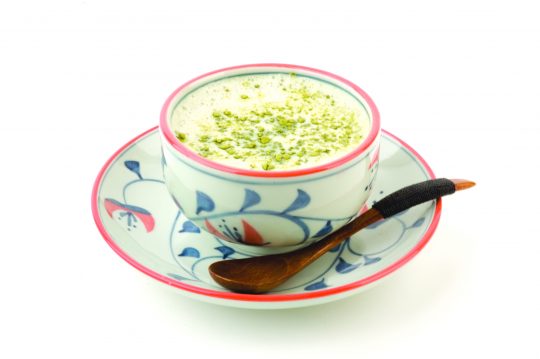 Style
Style
The Genmaicha Latte is a creamy, caffeinated drink ideal for latte lovers. It can be made with our special powdered Genmaicha sticks.
Teaware Needed
A Genmaicha latte can be prepared on stove-top or with the steamer of an espresso machine. Asian-style espresso cups are ideal for this presentation.
Preparation Recipe
Place three heaping scoops (or one Genmaicha stick packet) into a small amount (around a tablespoon) of hot water and whisk the powder into the water until it is dissolved. Add 8 oz milk (or non-dairy) to the dissolved Genmaicha powder. Bring to a boil once, or steam with espresso machine. Garnish with Genmaicha powder on top.
Sweetener options: vanilla, honey, cane sugar, stevia.
Flavor Profile
Energizing and creamy with a dry taste of fresh greens and toasted rice.
Click here to download the PDF Genmaicha Latte Brewing Guide
Iced Genmaicha Brewing Guide
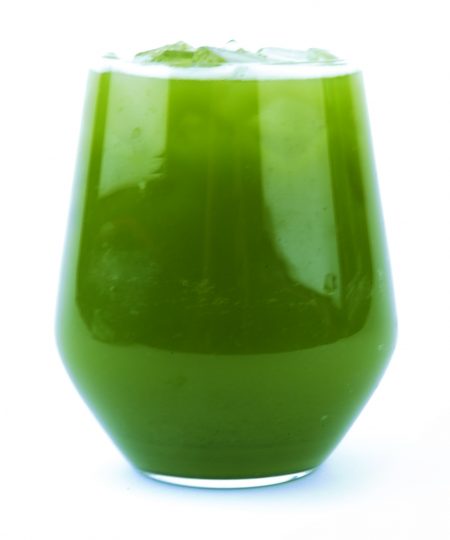 Style
Style
Ideal in summertime, for those craving an iced, natural, caffeinated and refreshing beverage.
Teaware Needed
Cocktail shaker, tea scoop.
Preparation Recipe
Place three scoops of Genmaicha powder (or 1 Genmaicha stick packet) into a cocktail shaker. Add a splash of hot water (approximately 2 oz) and swirl or whisk the Matcha and water together until the powder is dissolved. Fill the shaker half full with ice, then fill with room temperature water, shake well, and pour into a glass. Garnish with mint or ginger.
Sweetener options: honey, cane sugar, stevia.
Flavor Profile:
Toasty, sweet brown rice aroma and a smooth roasted flavor with a bright, grassy edge.
Click here to download the PDF Brewing guide for Genmaicha Iced Tea
Matcha Chai Brewing Guide
Style
Ideal for those who love both the rich spice combination of Indian chai, and the creamy, sweet, textured experience of drinking Matcha.
Teaware Needed
Small Ibrik (stove-top boiler), heat-resistant chai cups or tea glasses, matcha tea scoop.
Preparation Recipe
Place three heaping scoops of Matcha into a small amount (around a tablespoon) of hot water and whisk the powder into the water until it is dissolved. Add 8 oz milk (or non-dairy) to the dissolved matcha. Add chai spices of choice (cardamom, cloves, ginger, cinnamon). Bring to boil once, or steam with espresso machine. Add sweetener. Strain and serve. Garnish with any of the powdered spices.
Sweetener options: honey, cane sugar, stevia.
Flavor Profile:
Uplifting, warming mélange of sweet and spicy flavors.
Click here to download the PDF Brewing guide for Matcha Chai
Matcha Latte Brewing Guide
Style
Creamy — Ideal for latte lovers.
Teaware Needed
A Matcha latte can be prepared stove-top or with the steamer of an espresso machine. Asian-style espresso cups are ideal for this presentation.
Preparation Recipe
Add about 1.5 teaspoons (or 3 heaping scoops if using a chashaku) to a small amount of hot water (around a tablespoon) and whisk the powder into the water until it is dissolved.
You can then prepare the beverage like an espresso latte (steam around 8 ounces of milk and pour over the matcha), or you can add your milk directly to the matcha and heat over the stove, bringing to a boil once and then removing from the heat.
Garnish with Matcha powder on top.
Sweetener options: vanilla, honey, cane sugar, stevia.
Flavor Profile
Energizing, creamy, dry taste of fresh greens.
Iced Matcha Brewing Guide
 Style
Style
Ideal in summertime, for those craving an iced, natural, caffeinated and refreshing beverage.
Teaware Needed
Cocktail shaker, tea scoop.
Preparation Recipe
Place three scoops of Matcha into a cocktail shaker. Add a splash of hot water (approximately 2 oz) and swirl or whisk the Matcha and water together until the powder is dissolved. Fill the shaker half full with ice, then fill with room temperature water, shake well, and pour into a glass. Garnish with mint or ginger.
This can also be done with our special Genmaicha Powder.
Sweetener options: honey, cane sugar, stevia.
Flavor Profile:
Refreshing and cooling with full, rounded, dry texture.
Click here to download the PDF for ‘Iced Matcha Brewing Guide’
Traditional Matcha Brewing Style
Style
Although the traditional Matcha style has its origins in the elaborate Japanese tea ceremony, a simplified presentation creates a memorable experience for the tea drinker.
Teaware Needed
The Matcha bowl, or Chawan, is used to prepare and drink Matcha. We offer several different kinds of handmade, 12 oz Matcha bowls from Tokoname, Japan.
The curved portion of the tea scoop, or Chashaku, is used to scoop tea from the Natsume. The Chashaku that we sell is made from black bamboo; often, more elaborate and decorative Chashakus will be used in ceremonies.
The bamboo whisk, or Chasen, is used to dissolve Matcha in water. Many types of Chasen can be found in various colors and thickness. The highest quality whisks are made by hand, including the detailed work of curling thin strands of bamboo.
Preparation
Use 3 scoops of Matcha for 8 ounces of filtered water at 160 F. Press on the tea powder gently, use the whisk with a fast, sideways motion, and bring to a froth.
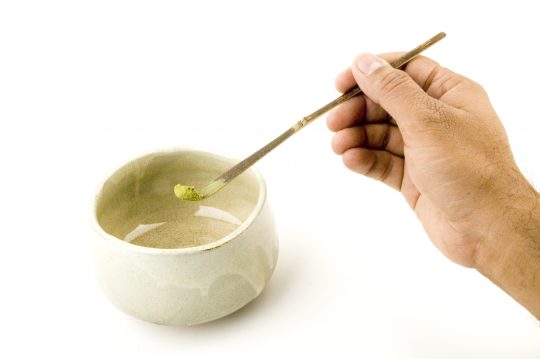
Variants
Usucha, or thin tea, is prepared with half a teaspoon of Matcha and approximately 75 ml (2.5 oz) of hot water, which can be whisked to produce froth or not, according to the drinker’s preference (or to the traditions of the particular school of tea). Usucha creates a lighter and slightly more bitter tea.
Koicha, or thick tea, requires significantly more Matcha, as many as six teaspoons, and up to 3/4 cup of water. Because the resulting mixture is significantly thicker, blending it requires a slower stirring motion which does not produce foam. Koicha produces a sweeter tea, and is served almost exclusively as part of Japanese tea ceremonies.
Flavor Profile:
Sweet, creamy, and buttery with a rich oceanic taste.
Click here to download the PDF Brewing guide for Traditional Style Matcha
What is Matcha?
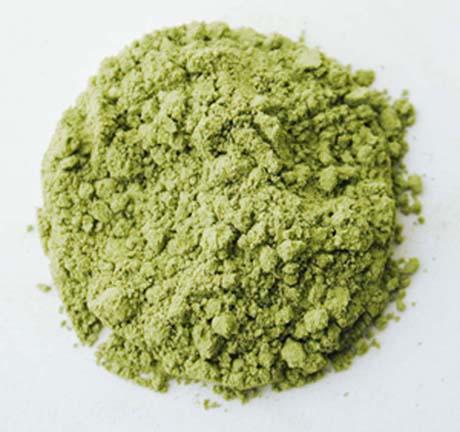 Ceremonial Cup
Ceremonial Cup
Known as “Powdered Green Tea,” Matcha has traditionally been used in “Chanoyu” — the Japanese Tea Ceremony. A cup of Matcha brings about mental concentration, emotional stability, and composure of the mind. It is said that a person operating within the rules of Chanoyu finds the five senses working at their fullest.
Health Balance
Unlike other teas whose leaves are infused in water and discarded, Matcha is ingested to obtain many essential ingredients that can be utilized fully to activate the organic functions of the human body. It is a beverage good for both the mind and the body.
Nutrient & Antioxidant Rich
Matcha contains essential vitamins and minerals and has shown long-term health benefits due to its many disease-fighting nutrients. It is very high in its antioxidant properties. Matcha has 9 times the beta carotene of spinach, 4 times that of carrots, and approximately 10 times the polyphenols and antioxidants of regular teas.
| Matcha (10g) | Black Tea (10g) | Coffee (10g) | |
|---|---|---|---|
| Caffeine | 0.3 g | 0.06 g | 0.06 g |
| Polyphenol (tannin) | 1.0 g | 0.2 g | 0.25 g |
| Protein | 3.1 g | 0.2 g | 0.2 g |
| Fiber | 3.9 g | - | - |
| Calcium | 42 mg | 2 mg | 2 mg |
| Iron | 1.7 g | - | - |
| Potassium | 270 mg | 16 mg | 65 mg |
| Vitamin A | 480 ug | - | - |
| Vitamin B1 | 0.06 mg | - | - |
| Vitamin B2 | 0.14 mg | 0.02 mg | 0.01 mg |
| Vitamin C | 6 mg | - | - |
| Carotene | 2900 ug | - | - |
Matcha: An Ancient Tradition
Shade Grown
In making Matcha, the tea plants are covered with bamboo mats in the last few weeks of their growing season to promote full flavor.
Powdered Art
After the leaves are plucked, they are immediately steamed to spread the chlorophyll throughout the leaves and to stop any oxidation. The leaves are then dried and rapidly cooled. The resulting dried product is called rough tea, or Aracha. Aracha is then cut into small pieces, and the twigs, veins, and stems are removed. The leaves are dried again, and the resulting product is known as Tencha. Tencha is ground by stone mills in a climate-controlled, clean room to produce Matcha. A single mill can only process 40 grams of leaves per hour.
Traditional Matcha Preparation
Matcha is traditionally prepared with a bamboo whisk in a bowl. As part of the Japanese tea ceremony, there is an elaborate process that utilizes various utensils to make a bowl of Matcha. Click here for more on traditional Matcha preparation.
Modern Matcha Specialty Drinks & Uses
Matcha can easily be prepared in a variety of hot or iced drinks, shakes, and smoothies. Matcha can also be used as an ingredient for sauces, dressings, desserts, ice cream, chocolate, and toppings.
Flavor Profile
Matcha has a sweet, creamy, buttery, and rich oceanic taste.
100% Organic – Directly from the Tea Farm
We directly import our Matcha from one of the oldest certified organic Matcha manufacturers in Japan. Freshness is ensured with quality packaging and climate-controlled storage.
Tea Map – Ilam
The name Ilam is derived from the Limbu language in which “Ii” means twisted and “Lam” means road. Tea production in Ilam started as early as 1863, when the Chinese government offered then Prime Minister Jung Bahadur Rana tea saplings that were then planted in Ilam. In 1868, the Ilam tea factory was established, and tea plantations covered over 135 acres of land. In 2010, the tea factory was privatized, and is currently not under operation. However, tea production continues in Ilam in other forms. In 2010, the total tea production of Nepal was 16.23 million kilograms per annum; a majority of this amount was produced in Ilam itself.
Tea Map – Nepal
Nepal in South Asia, is located between China (to the north) and India (to the south). The eastern zones of Nepal, where most of the country’s teas are produced, have more or less the same geographical and topographical conditions as the Darjeeling area, thus producing an aromatic, fruity tea that is often considered a cousin of Darjeeling. Recently, some tea gardens in Nepal have taken on a more progressive approach and are beginning to introduce different styles of tea. Today, Nepal’s tea industry is dominated by private players, whereas in the 1990s the tea industry was a government monopoly prior to the liberalization of the tea industry. Until 2003, Nepal’s tea export accounted for only about 80 – 100 tons per annum. However, due to the liberalization adopted about a decade ago, Nepal tea industry witnessed an exponential rise in the export of its tea, accounting for almost 4,000 – 5,000 tons per annum.
Tea Map – Shizuoka
Shizuoka is a prefecture of Japan located in the Chubu region on Honshu island. Mt. Fuji is located on the northern border of Shizuoka Prefecture and provides picturesque views. Shizuoka, meaning ‘tranquil hills’, is a mountainous terrain rising to 3,000 meters. The climate in the area is very conducive to growing tea, especially due to its rain and mist. Tea in Shizuoka has a long history of more than 800 years. It is the largest tea region in Japan with 40% of the nation’s tea plantations. Many tea plantations are small, family-run operations which have remained in the same family for many generations. Each plantation may grow several varietals of tea in various plots, and most of it is made into green tea.
Tea Map – Aichi
Aichi is a prefecture in Japan, located on the southern coast of Honshu, the largest island, and is part of the broader Tokai region. Aichi is bordered by Shizuoka to the east, Gifu to the north, and Mie to the west. All of these prefectures are tea growing regions.
Although producing a smaller total volume of tea, and less well-known than Mie and Shizuoka, Aichi is still an important tea producing region.
Aichi is home to Nagoya, Japan’s fourth largest city; much of the prefecture is heavily developed, both with urban and suburban areas and industrial areas.
Tea Map – Uji
Uji is one of the oldest cities in Japan, located on the southern outskirts of Kyoto, in Kyoto Prefecture, Japan. Founded on March 1, 1951, Uji is located between the two ancient capitals of Nara and Kyoto. The city sits on the Uji River, which has its source in Lake Biwa. Uji has an estimated population of 200,000. The city has also been celebrated for its tea for almost a thousand years. During cherry blossom season, the bridge that spans the Uji river makes for a breathtaking walk. An annual Tea Festival takes place on the first Sunday of October. As befits a city built on tea, Uji takes its water seriously. This festival celebrates the rituals involved in drawing up the famous water. Costumes are worn, prayers of thanks are said to the luminaries of tea history, tea-tasting competitions are held, and best of all, there’s free tea on offer.
Tea Map – Japan
The history of tea in Japan has its earliest known references in a text written by a Buddhist monk in the 9th century. Tea became a drink of the religious classes in Japan when Japanese priests and envoys sent to China to learn about its culture brought tea back to Japan. The first form of tea brought from China was probably brick tea. Ancient recordings indicate the first batch of tea seeds were brought by a priest named Saicho in 805 AD and then by another named Kukai in 806 AD. It became a drink of the royal classes when Emperor Saga, the Japanese emperor in the early 9th century, encouraged the growth of tea plants. Seeds were then imported from China, and cultivation in Japan began.
Tea Map – Hsinchu
Tea Map – Shan Lin Xi
Shan Lin Xi is a high elevation tea area (1700 to 1900m), located in the heart of Taiwan’s tea growing center, Nantou County. Shan Lin Xi is a pristine nature area known for its maples, cedars, wildflowers and scenic beauty. Although Shan Lin Xi has a long history of tea, only in the last twenty years has the production increased significantly due to popularity. The main tea plant varietal in the area is ‘Qing Xing’ oolong varietal.
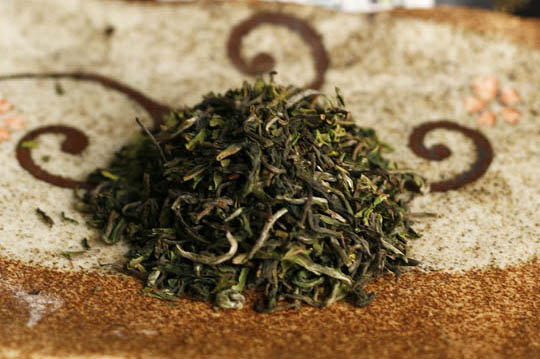
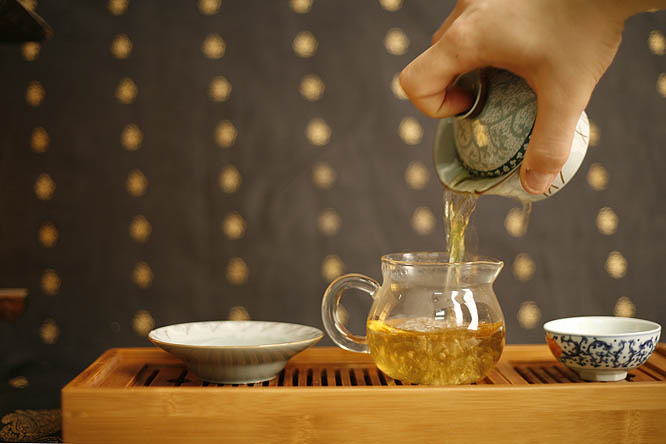
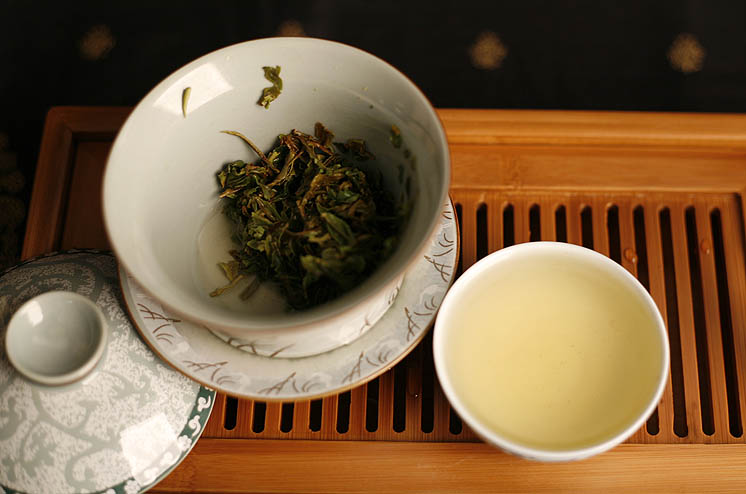


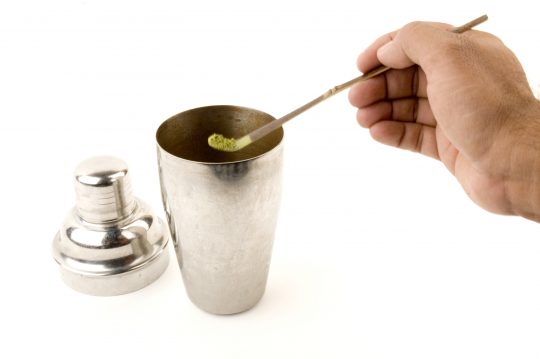
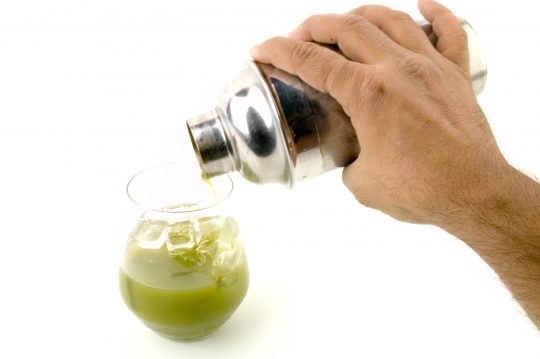
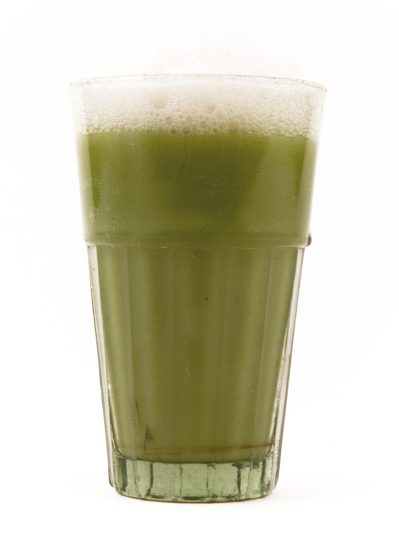
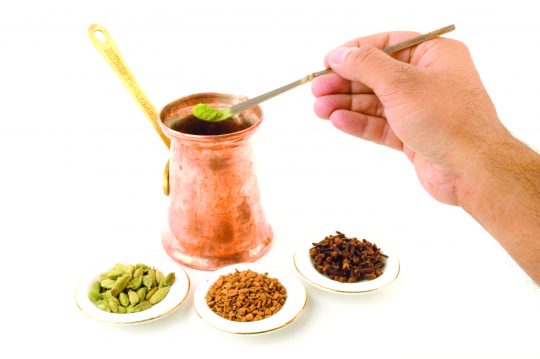
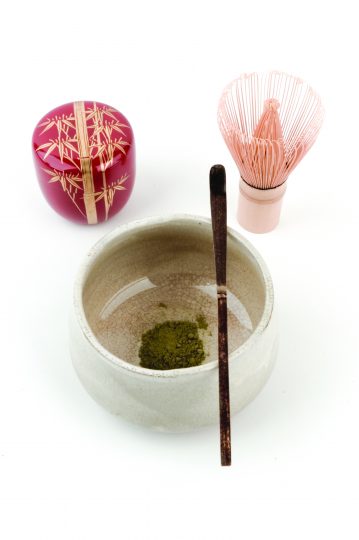



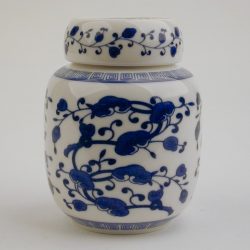


 Ceremonial Cup
Ceremonial Cup